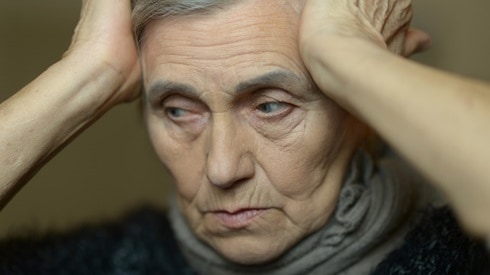Article About:
As people live longer, and as more progress is made in preventing the leading causes of death — such as cancer and heart disease — the chronic conditions of older adulthood make a more profound impact on families and society. Of these Alzheimer’s Disease may be one of the most devastating because of its progressive nature and associated disability.
The typical progression of Alzheimer’s is familiar: a person, usually an older, begins to forget details. Errors in thinking become more frequent and serious until they interfere with the patient’s and their family’s activities of daily life. Eventually, the victim may fail to recognize familiar people and places, and lose the ability to care for themselves. Death usually occurs due to other illnesses or as a result of complications of the disability.
Although the underlying cause is not fully known, the changes in brain tissue that bring on the symptoms of Alzheimer’s are readily recognized. The support structures between neurons progressively become more and more damaged. At least two proteins that are most likely responsible for this damage have been identified. Then, the neurons themselves die. Although a definitive diagnosis can be made only by examining brain tissue under a microscope – usually at autopsy – Alzheimer’s can be identified with reasonable certainty from a computerized tomography (CT) scan and laboratory tests, provided other common causes of dementia have been excluded.
In the early to middle stages of Alzheimer’s, family members are usually responsible for most of the care. A familiar, quiet and well-structured environment with a simple, regular routine works best for most people with Alzheimer’s. Family caregivers need support from friends, neighbors and employers in maintaining this kind of environment; they also need support and encouragement for themselves. For example, respite care that enables caregivers to get away for a break can be helpful.
Formal support groups across the nation exist for patients and families coping with Alzheimer’s. Many organizations have published literature about every aspect of Alzheimer’s, available both in hard copy and online. Also, a national bracelet-identification program has now been established to reunite caregivers with Alzheimer’s patients who may have wandered away.
In the later stages needs are often too intense for family members to handle in their homes. Placement in a residential facility may become necessary. When choosing an environment for a loved one, make sure the facility is clean, has a positive track record with the state licensing agency and specializes in the care of persons with Alzheimer’s. When making your choice, it may be helpful to talk with several families of other residents to hear their opinions on the service and level of care. It’s important for you and your loved one that you continue to be active in their circle of care.















